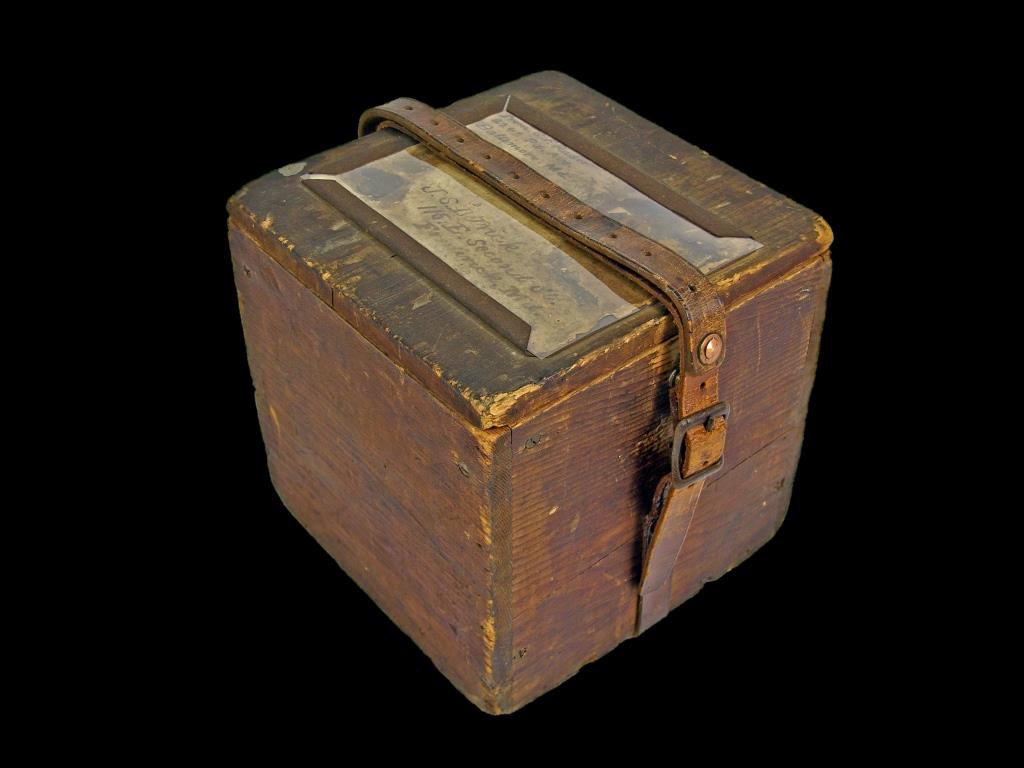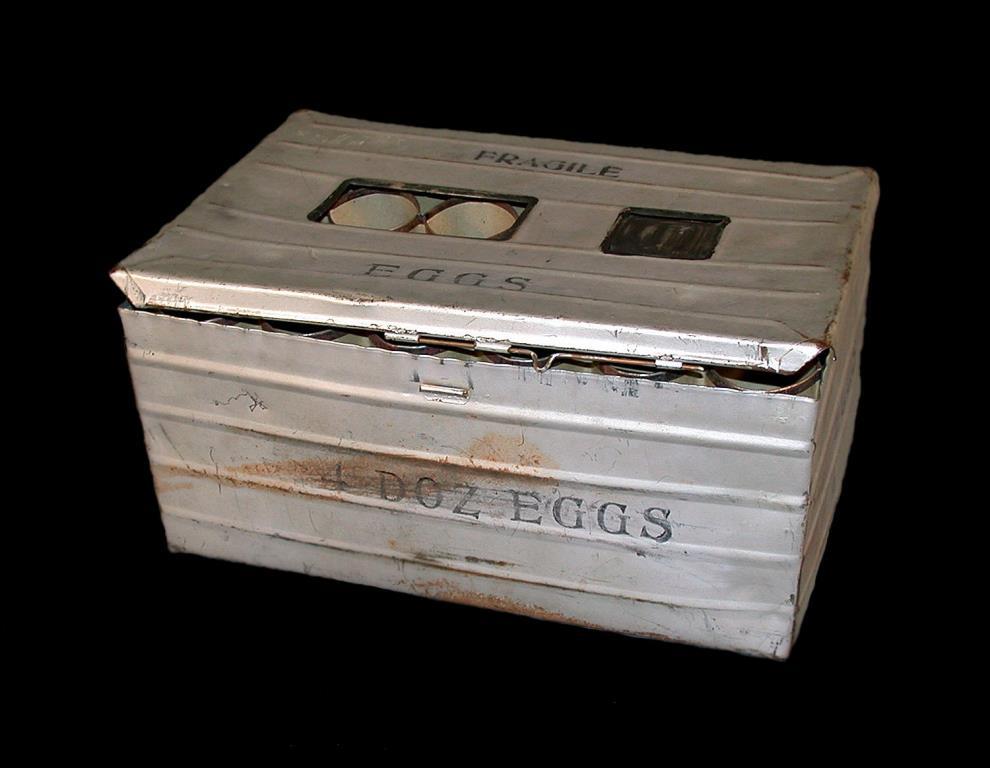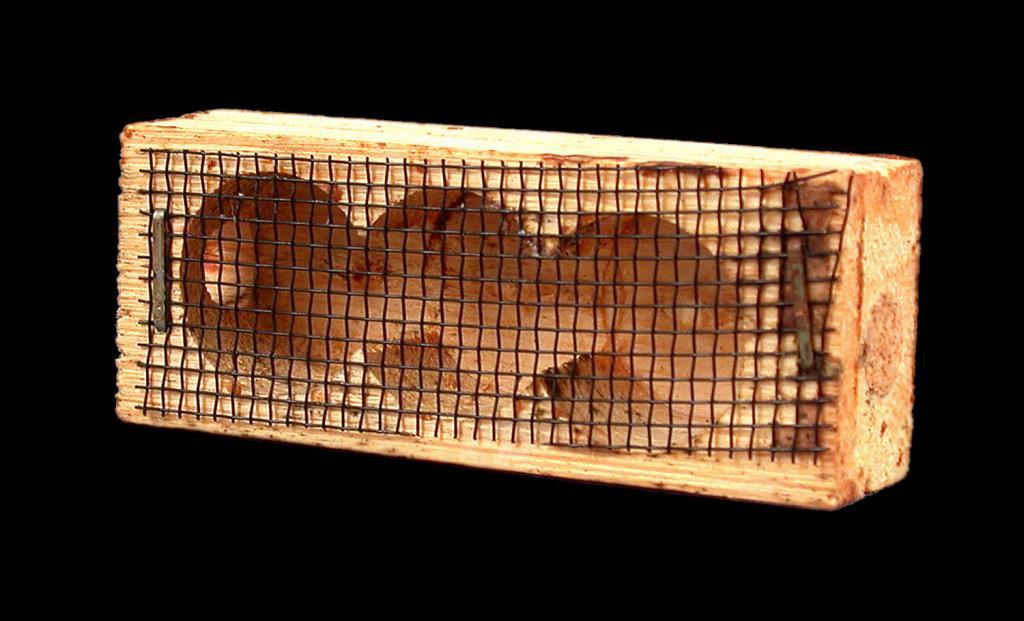Images From the Farm-to-Table Years
The prominence of the parcel post initiative is reflected in a rich legacy of visual artifacts illustrating the people and objects from this time.
The following images are made available by the Smithsonian Institution's National Postal Museum and the Library of Congress.
Butter Box (c. 1913-1920s)
Smithsonian's National Postal Museum
This box was used for shipping butter. The leather strap and buckle secured the lid of the wooden outer box, which insulates a smaller metal container. The butter was packed in the metal container. A mailing label was slipped into the metal frame on top of the wooden lid.
The addresses on the label of this box show that it was shipped between Baltimore and Frederick, Maryland, a distance of approximately 50 miles. The box was then returned empty. The introduction of Parcel Post service in 1913 encouraged the sale of farm produce directly to urban consumers.
Museum ID: 1992.2002.10.1
Four-Dozen Egg Crate (c. 1913 - 1950s)
Smithsonian's National Postal Museum
This Parcel Post crate is designed to hold forty-eight eggs for shipment. The crate is constructed of ferrous metal and contains two removable cardboard shelves, each holding twenty-four separator compartments. The compartments are arranged in four rows of six collars formed by cardboard that is reinforced with metal rims. An open window in the lid displayed the address card, and to its right, the small, slotted indentation held a card for postage stamps. A metal rod that slides through hollow hinges fastened the lid to the silver-painted crate marked 'Fragile.' Farmers used such egg crates to mail their product by Parcel Post directly to consumers in cities.
Museum ID: 1986.0674.1
Queen Honeybee Cage (Present Day)
Smithsonian's National Postal Museum
Used for shipping a queen bee, this rectangular wooden container has three circular chambers covered in a wire mesh that hold the queen bee and a few accompanying workers bees, who feed her in transit. Two holes at the ends are sealed during transit, one with a cork and the other with a sugar-candy plug. When the cage is introduced to the hive, the bees work their way through the candy plug, and the queen is released.
Shipping of agricultural products blossomed as the result of the 1896 introduction of Rural Free Delivery service and the 1913 commencement of Parcel Post service. The mailing of live animals continues today and is well regulated in the interest of the health of the public and the animals.
Museum ID: 1991.0414.1
Photograph of Rural Carrier in Automobile at Mailboxes (c. 1910)
Smithsonian's National Postal Museum
Postal officials encouraged Rural Free Delivery (RFD) carriers to replace their horses and wagons with the latest in transportation technology. This unidentified carrier painted his early electric-motored vehicle in the same paint and identification scheme as the RFD wagons of the era. He is, no doubt, only able to complete his wintertime rounds thanks to a snow-plowed road. Automobiles were not yet adequate replacements for horses, wagons, and sleds on rural roads.
Museum ID: A.2010-2
Parcel Post Wagon in New Bedford, Massachusetts (1913)
National Postal Museum. Smithsonian Institution Flickr Photostream
"A postal employee posed with this brand new parcel post wagon in New Bedford, Massachusetts. The Parcel Post Service began on January 1, 1913."
Post Office Department. Parcel Post. Rural Free Delivery (1914)
Harris & Ewing, Photographers
Library of Congress. Prints and Photographs Division. Harris & Ewing Collection
A postal employee is shown in a wagon exchanging a parcel with a man on a rural dirt road. Two children stand in the background.
 An official website of the United States government.
An official website of the United States government.







